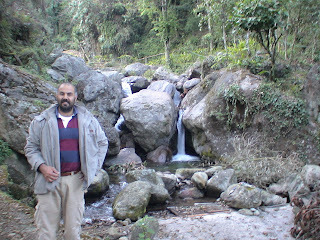The United Nations promote the integration of poverty reduction and environmental sustainability through its various programs. However, such attempts have not been highly successful as more than one billion human beings continue to live under poverty and biodiversity continues to erode at the faster rate. This is primarily due to the failure to simultaneously address economic and environmental problems and lack of people centric agenda for poverty alleviation and for addressing environmental issues.
The United Nations however has made tremendous progress in partnership with other agencies, governments and communities to work for the sustainable development. However, the outcome of such projects needs to be carefully evaluated for the future development programs.
One approach taken by development organisation in the eastern Himalayan region in Darjeeling district, West Bengal, India, is to partner with corporates and develop projects such as Mini - Hydel power projects, using sound environment technology under Clean Development Mechanisms (CDM) based in Lodhama, Darjeeling District, West Bengal, India. In this project, water is diverted from stream flowing through a village that affects stream biodiversity and leads to drying of crops in neighbouring fields. This affects livelihoods of the poorest of the poor (income is ~ US 16c per head/day). Ironically, this village gets no share of the power generated from the water resources or any other benefit from this ‘socially and environmentally’ responsible project. On the other hand, the business organization, a Multi-National Company (MNC) is generating revenue from power and as this is a CDM project they are offsetting Carbon pollution for some other MNC which continues to generate offsite pollution! Biodiversity loss at site and more pollution offsite – this is certainly not the desired outcome for the UNDP or UNFCCC. In its submissions to the UNFCCC, the concerned business organisation has taken all measures and addressed ‘social and environmental concerns’ to fulfil their regulation requirements. Under such conditions, it is difficult to foresee social or environmental issues that may emerge or are starting to arise as villagers are being isolated from rest of the world on the basis of economic ‘power’. As they are already amongst the poorest of the poor according to the socio-economic status, the new equation of resource control and manipulation in the name of economic development has taken away their right to utilise stream water sustainably for their food crops and vegetables that fetch them meagre livelihoods.
Does the CDM project look clean? And whose development is it sustaining?
Will the houses in Lodhama ever glow at night?
INDIAN GOVERNMENT NEEDS TO LISTEN TO FARMERS IN REFORMING AGRICULTURE IN INDIA 1. Three new farm acts in India are proving to be the last straw for about 90 million small-holders and their families. This has grave implications for about 800 million rural dwellers who are directly or indirectly dependent on farming for their livelihood. In addition, food security of the entire nation with 1.35 billion population is at risk. 2. Indian government maintains that these farm laws will usher a new economic revolution in the ailing farm sector. 3. Whereas farmers are opposing as they fear losing their land – only source of their livelihood – to corporate backed agri-enterprises. 4. The protest and persistence by farmers have opened up an opportunity for a dialogue between farmers and the government and for a new beginning. This has potential to reform small-holder agriculture but in close consultation with the farmers. 5. However, the rights of these farmers and many associat...

Comments
Post a Comment